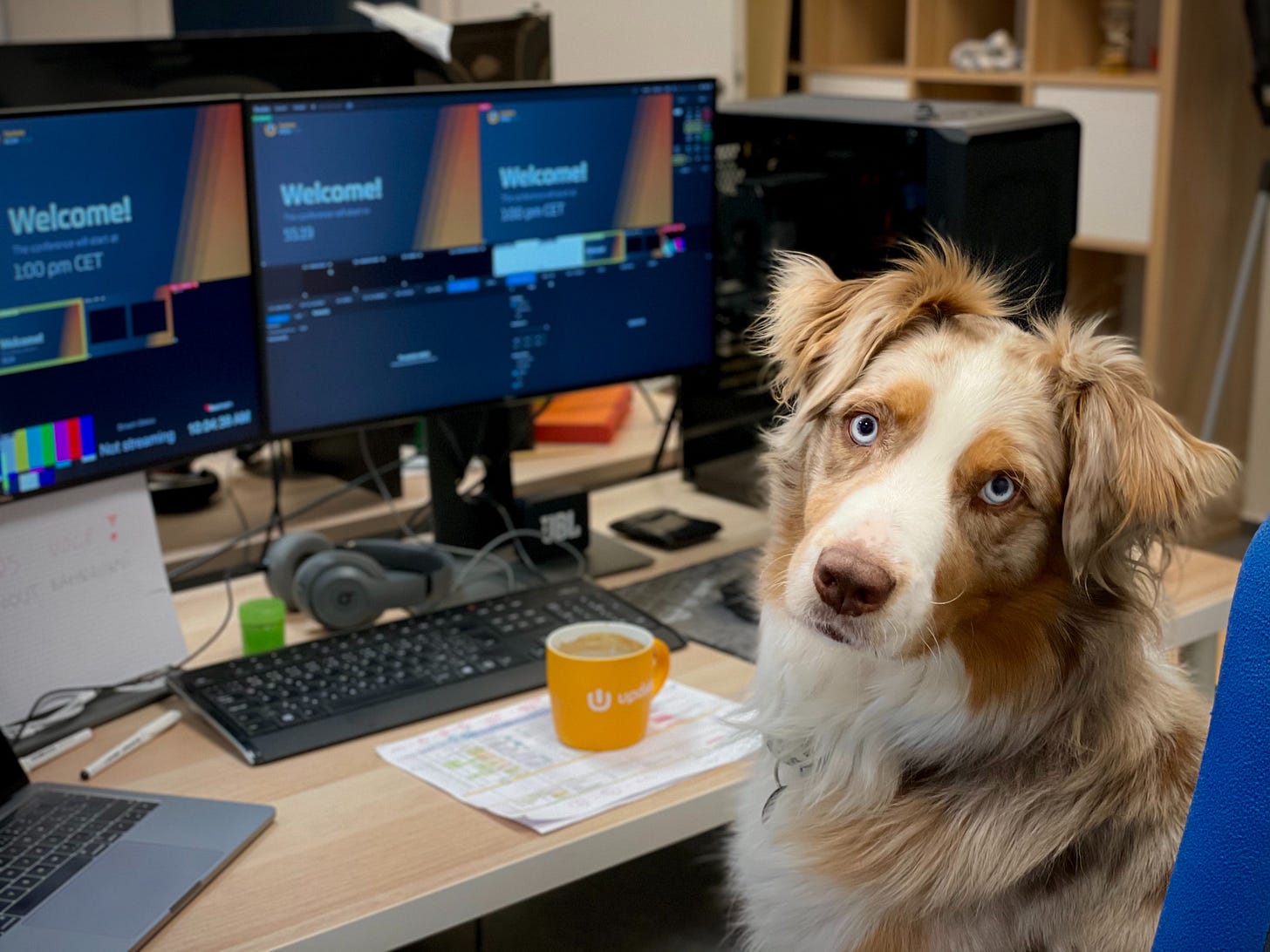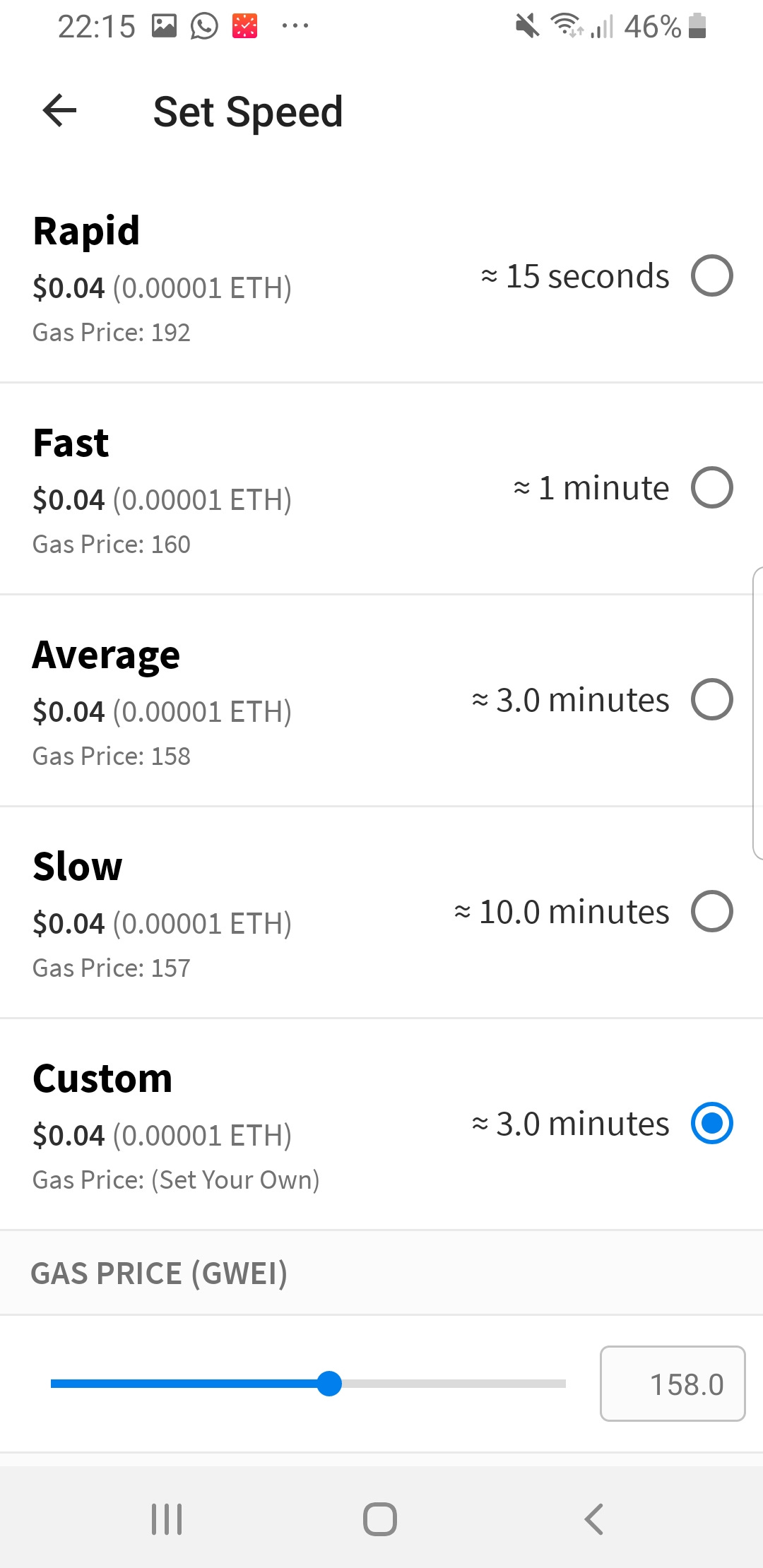A Messy but True Step-by-Step Guide to Buying an NFT
How to choose a wallet, connect to a marketplace, and hope that the transaction fees aren't too high
Much like my venture into crypto, I spent months researching how to buy a non-fungible token (NFT).
Fungible means something that can be easily replaced or exchanged in value (ex: a loaf of bread for $1.00, $1.00 for €0.85)
Non-fungible describes something that is not easily exchanged for a determined value (ex: an original van Gogh, the deed to a house)
And even with a year’s worth of experience buying and storing crypto, I still struggle to figure it out.
I had heard that all I need is a wallet, and it doesn’t matter what kind. But that’s not exactly true. And it’s also not as simple as connecting your wallet and clicking “buy.”
You can think of “connecting your wallet” like logging into a website and entering your payment information in a single action.
Most guides don’t cover all the information a first-time buyer needs to complete the process. Every time I thought I had the answer, a new obstacle would arise. And I’d be too exhausted by that point to try again.
But I would always try again at some point because I’m emotionally invested in seeing NFT artists succeed.
I know, however, that many people who are new to the space don’t have the same motivation, energy, or interest.
So I wanted to create this messy but true step-by-step guide to buying an NFT. One that explains every step, consideration, and stumble I experienced. A guide to give you the confidence to try again.
Choosing a Wallet to Buy and Store an NFT
Anyone worth respecting in crypto or finance world will tell you to do your own research (DYOR).
But what’s difficult about DYOR in crypto -- whether it’s wallets, coins, or exchanges -- is that people will always have good and bad things to say about them. And I’ve been struggling to decide what makes a wallet “good” in my terms.
Usually, there are five characteristics I consider when evaluating wallets:
Which cryptocurrencies does it store? (Not all wallets hold the same currencies, just like bank accounts)
Cryptocurrency is a type of digital money, which usually has a mission, purpose for us, or ideology behind it. For example:
Guapcoin focuses on the financial well-being of the global Black community
Dash encourages daily use via its fast transactions and governance
Sand is used for the blockchain gaming ecosystem within The Sandbox
Does it work on Android? (That’s the type of mobile phone I use)
Is it custodial or non-custodial? (Do I hold the “keys to my cheese”?)
Custodial means the platform or third party has ultimate control of your crypto. Kind of like how a bank can seize, freeze, or lose the money in your account.
Non-custodial means that you have ultimate control of your crypto. You can think of it as keeping of dollars in a safe in your home that only you can open.
Does it have a nice user interface? (I want to enjoy being in the wallet app)
Who else uses this wallet? (Do people I respect and trust approve of it?)
But even with these criteria, I still struggle to choose a wallet. For example, I know MetaMask is a popular wallet, and it meets most of my requirements. But I’ve been super confused about whether it’s custodial or not.
Furthermore, with NFTs being a common topic of conversation in mid-2021, you would think that wallets would have something in the FAQs that answers “Can I store my NFTs in XX wallet?”
But they don’t.
After taking Eleonore Blanc’s Crypto 101, I decided that it’s important to me to have my own keys (i.e. use a non-custodial wallet).
So I looked into some wallets other than MetaMask and landed on two options: Argent and Alpha.
I want to use Argent because they’re big on security, and it’s been a highly recommended wallet by people I trust. But they require a one-time fee of 0.01 ETH.
ETH is Ethereum, a cryptocurrency and network that the majority of NFTs are built on.
In October 2021, that was around $100. I just couldn’t justify the fee to set up a wallet when I was already struggling to buy an NFT.
So I chose Alpha because it:
was on a couple lists I read about top wallets for NFTs
works on Android
gives me my keys
has an easy UX
Plus, it’s on the WalletConnect registry (I’ll explain soon).
Connect Your Wallet to the NFT Marketplace
An NFT Marketplace is like an online store. Artists (the people who create the NFTs) can upload their work, and collectors (the people who buy the NFTs) can browse through numerous works on marketplaces like Rarible, OpenSea, and Crypto Kweens (coming soon!).
I visited OpenSea numerous times to browse through NFTs, but for the longest time, I couldn’t figure out how to connect my wallet. And whenever I tried using WalletConnect, it never seemed to work.
WalletConnect allows decentralized applications (like an NFT Marketplace) to connect to numerous wallets. You can think of it like how Paypal can let you use different payment accounts with different websites.
But WalletConnect doesn’t connect just any wallet. Luckily, they have a growing list of wallets that support their protocol. And Alpha wallet is one of them!
After installing the wallet on my phone, and then transferring funds from another wallet I already had, I connected it to OpenSea. I selected the NFT I wanted, which was priced at 0.006 ETH. I had 0.012 ETH in my wallet. Plenty to cover the price of the NFT as well as any gas fees.
Gas refers to the fees that go to the crypto miner who actually records the transaction on the blockchain.
I was so certain I had figured this out.
I went to buy the NFT, tapped “convert” ETH (not knowing why I needed to convert it into anything), tapped “confirm transaction,” only to see:
Intrinsic gas too low.
I already knew about gas fees, but what the fuck is “intrinsic gas”? Was there something different about “gas” versus “intrinsic gas”?
Diving Deeper into Gas (Spoiler Alert: I’m Cheap)
I asked a few different groups about “intrinsic gas.” Heather from Women in Blockchain Talks shared this website that monitors gas fees, which was super helpful. And as it turns out, “intrinsic gas” is the same thing as “gas.”
I tried buying the NFT again. Even when I selected “fast” or “rapid” gas fees, I saw the same error. To explain what I mean, here’s a screenshot of the transaction confirmation screen as of January 2022:
But even after checking the average gas prices and trying to make a purchase at an optimal time, I still couldn’t complete the purchase. I even tried buying and using Polygon (MATIC) because I saw it was listed as a currency option on OpenSea.
That didn’t work either.
Out of frustrated curiosity, I tapped “custom” gas, and that’s when I figured out the actual gas fees. It turns out I needed somewhere around 0.08 ETH just for gas in November 2021. Nearly $400 to process the transaction for a piece of art that was priced around $35.
This whole time I assumed that the “average” gas fee (listed as <.002 ETH in November 2021) was a sufficient amount. But it seems that OpenSea wasn’t properly updating the costs.
So in conclusion, I couldn’t buy an NFT is because I didn’t have enough money. As gas fees drop and the price of ETH dips, maybe I’ll buy a piece one day.
I Love NFTs
Despite all my frustration with this process, I still believe that NFTs are awesome.
NFTs allow artists to set and earn royalties from their work. While royalties have been a mainstay of the entertainment industry, NFTs give artists complete control over setting the agreement.
In other words, there’s no agent, gallery, or studio setting the terms or taking their big-ass cut. Artists have complete control over their contracts and how they earn from resales. (Tavonia Evans envisioned this early on as a function of Guapcoin.)
Consider this: after an artist spends hours toiling over a piece of art - ideating, creating, destroying, rebuilding, polishing - they sell it. Maybe they sold it via Instagram and their web shop, or maybe they sold it through a gallery. Either way, they usually get one chance to earn a profit from their work.
20 years later, the original buyer decides to sell the piece. The buyer earns back their original investment and maybe a little more. But the artist? Their name is attached to the piece, but they often earn nothing but “exposure.”
But with NFTs, the artist can program a smart contract to include an automatic cut for themselves whenever the piece is resold. Because the contract lives on a blockchain, every proper transaction is recorded. That’s how anyone can prove that they own the rights to the original copy.
And every time that piece of work is sold, the artist receives a percentage of that sale.
You may consider these images or songs a complete waste of money and totally worthless. How can there possibly be value in something that can be screen captured or downloaded?
I feel the same way about toys that can be destroyed in a fire. Stamps that live in a booklet. Beanie Babies that collect dust. A first edition of a book. Baseball cards that are less than interesting to look at. A Rolex watch that’s only worn on special occasions.
Regardless of what the object is, we still require some type of proof that this thing is, in fact, valuable. You might have a shabby postcard or a high-quality photo of Starry Night, but it’s not worth as much as the original painting.
Why?
Because someone can prove that your image is not the original piece of work. That’s what makes your screenshot worthless.
But if you don’t care about the status of collectibles, limited editions, luxury brands, or original works of art, then I can understand why the NFT hype doesn’t interest you.
Personally, the idea of collecting or owning things for their potential value doesn’t interest me at all.
Supporting artists interests me. Participating in new, innovative technologies excites me. That’s why I love NFTs, and why I want you to know about them.
But Wait - There’s More!
I initially started drafting this article in October 2021. Now, in January 2022, the gas fees have, indeed, dropped. So I tried to buy the same NFT again.
I went through the same strokes, but when I hit “confirm transaction,” it actually started to do something.
And so I waited and waited with great anticipation, only to realize that I had converted my ETH…into ETH Polygon. It seems that my whole struggle wasn’t to purchase the NFT, but to “bridge” my ETH to ETH Polygon? Which is…different from the $MATIC I bought?
Clearly I still have so much to learn. We all do.
I’d love to create a complete guide that ends with me actually buying an NFT. But if I waited for every step to be perfectly complete, I’d never publish anything.
I have to remind myself that the whole reason I started Forever a Noob so that you can feel comfortable learning, too.
But hopefully soon I’ll be able to tell you about my successful purchase!
Interested in hiring me to write about crypto?
🧡 Big thanks to the folks at Foster for their feedback and help with this piece, especially Rajat, Michael, Cameron, and Randy







Sterling - you are hilarious! Thank you for this candid share on buying an NFT. I'm also bumbling my way through the process. I just bought my first NFTs on Jan 5, 2022 and opted for MetaMask b/c I was loathe to add yet another crypto wallet to my collection. The NFTs (alpha girl club) cost around 0.08ETH ($300 at the time of purchase) and gas fees were around 0.025-0.04ETH ($90-$150). I tried to limit the gas price on one transaction and lost $100 to the network without a successful purchase . . . I guess we're all learning together. Keep it up!